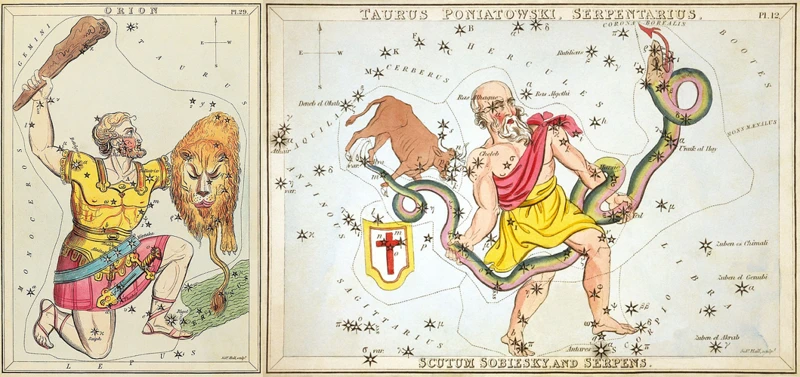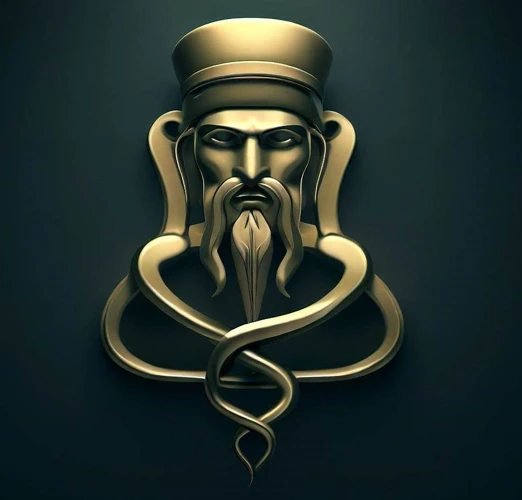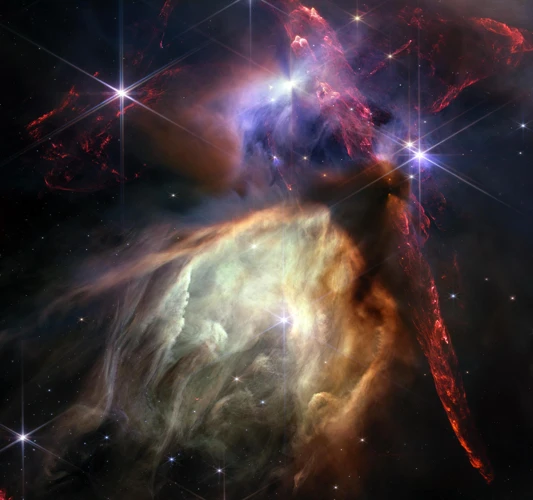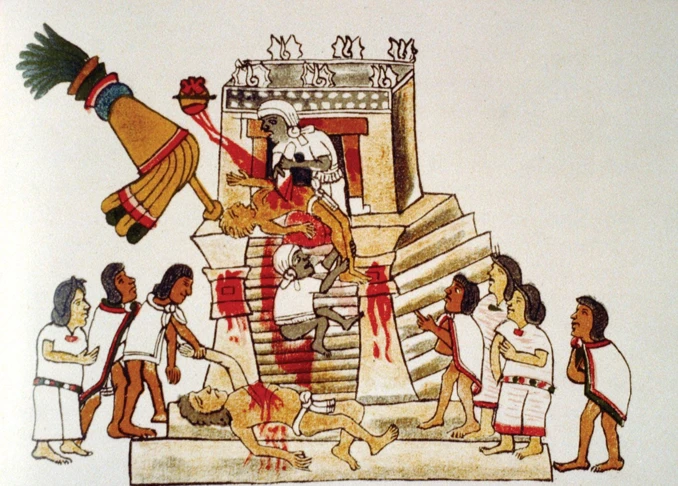The ancient civilization of the Aztecs holds a mysterious allure, with their rich mythology and religious practices. Central to their beliefs was the role of sacrifice, which played a significant part in their society’s rituals and customs. This sacrificial tradition, both human and animal, served as a link between the mortal realm and the spiritual world. By delving into the beliefs and practices surrounding sacrifice in Aztec mythology, we can gain insight into the complex religious system of this intriguing culture. Join us as we explore the diverse types of sacrifice, the rituals and beliefs associated with them, and the controversies and modern perceptions that surround this ancient practice.
The Aztec Religion and Mythology

The Aztec civilization was characterized by a complex religious system intertwined with captivating mythology. Their religion centered around a polytheistic pantheon, comprised of powerful deities with unique roles and powers. These gods and goddesses played an integral part in the daily lives of the Aztecs, influencing everything from agriculture to warfare. The Aztec belief system was a blend of spirituality and practicality, as they sought to maintain a harmonious relationship with their gods through various rituals and offerings. One of the most intriguing aspects of Aztec religion was their belief in the importance of sacrifice as a means of appeasing and honoring their deities. This fascinating blend of religion and mythology provides a window into the beliefs and practices of the Aztec civilization. For more insights into the creation myth of Aztec mythology and an overview of the roles and powers of the gods and goddesses in the Aztec pantheon, be sure to check out our articles on the creation myth of Aztec mythology and the gods and goddesses of the Aztecs.
1.1 The Aztec Pantheon
The Aztec pantheon was a diverse and intricate collection of deities that played significant roles in the religious beliefs and practices of the Aztec civilization. These gods and goddesses represented various aspects of the natural world, human activities, and cosmic forces. One of the most revered deities was Huitzilopochtli, the patron god of the Aztecs who symbolized war, sun, and sacrifice. Other prominent deities included Tlaloc, the god of rain and fertility, Quetzalcoatl, the feathered serpent deity associated with wisdom and knowledge, and Tezcatlipoca, the god of destiny and sorcery. Each deity had its own unique attributes, characteristics, and areas of influence within the Aztec society. The Aztecs believed that by honoring and appeasing these deities through prayers, offerings, and rituals, they could ensure the well-being and prosperity of their community. To learn more about the deities in the Aztec pantheon and their roles, you can refer to our comprehensive article on the Aztec pantheon.
1.2 The Significance of Sacrifice
The Significance of Sacrifice in Aztec mythology was profound and held great importance within their religious beliefs and practices. Sacrifice served as a means of communication and gratitude towards the divine entities in the Aztec pantheon. The Aztecs believed that through sacrifice, they could maintain the delicate balance between the mortal world and the spiritual realm. Human sacrifice was considered the most supreme offering, as the blood spilled during these rituals was believed to nourish the gods and sustain the cosmic order. It was believed that by sacrificing their own lives or the lives of captives, they were not only appeasing the gods but also contributing to the continuous cycle of creation and destruction. Animal sacrifice was also common and played a significant role in honoring the deities and seeking their favor. Animals, such as ducks, rabbits, and dogs, were often chosen for their symbolic significance and offered as sacrifices. These sacrifices were conducted during religious ceremonies and festivals, where the entire community would participate, reinforcing the communal bond and sense of devotion to the gods. The significance of sacrifice in Aztec mythology cannot be understated, as it was deeply intertwined with their cosmology, religious beliefs, and societal cohesion.
Types of Sacrifice

Sacrifice held a profound significance in Aztec culture, manifesting in various forms. One of the most striking types of sacrifice was human sacrifice, which played a central role in religious ceremonies and was believed to sustain the cosmic order. The Aztecs believed that the gods required nourishment in the form of human hearts and blood to maintain their strength and vitality. Another prevalent form of sacrifice was animal sacrifice, where animals such as jaguars, eagles, and snakes were offered to appease the gods and ensure plentiful harvests and protection from natural disasters. These sacrifices were performed with a sense of solemnity and reverence, reflecting the Aztecs’ deeply ingrained beliefs in the cyclical nature of life and their sustained connection to the divine. Their commitment to these rituals highlights the profound faith and devotion of the Aztec civilization.
2.1 Human Sacrifice
Human sacrifice held a prominent role in Aztec mythology and religious practices. It was considered the most esteemed form of sacrifice, reserved for special occasions and reaching the highest spiritual significance. The Aztecs believed that offering human life to the gods ensured the preservation of the cosmic order and the continuation of the world. These sacrifices were usually carried out during important ceremonies or in times of crisis, such as drought or famine. The sacrifices were carefully planned and involved elaborate rituals. Victims, often war captives or volunteers, were chosen based on specific criteria, including physical attributes that represented particular deities. The process of human sacrifice involved a variety of intricate steps, including the preparation of the victim and the ceremonial aspect of their deaths. The Aztecs believed that the offering of a human life was a sacred act and that the victim would transcend into an elevated spiritual state. These sacrifices were seen as a vital duty in maintaining the balance between the mortal realm and the divine world, ensuring the prosperity and well-being of the Aztec civilization. The ritual of human sacrifice played a significant role in the Aztec culture, offering a profound connection between the physical and the spiritual realms.
2.2 Animal Sacrifice
Animal sacrifice was another significant form of worship in Aztec mythology. It involved the offering of various animals to the gods as a means of demonstrating devotion and seeking favor. Different animals were associated with specific deities, with each contributing to different aspects of Aztec life and culture. For instance, the majestic jaguar was associated with Tezcatlipoca, the god of night and sorcery. The Aztecs believed that sacrificing a jaguar would harness its power and grant them strength and protection. Similarly, the quetzal bird, with its vibrant green plumage, was linked to the god Quetzalcoatl, the feathered serpent, who represented fertility and creativity. The sacrifice of a quetzal bird was seen as a way to invoke these qualities. Dogs, turkeys, and rabbits were also commonly sacrificed, each associated with different deities or purposes. The rituals for animal sacrifices varied depending on the importance and nature of the occasion. They often involved intricate ceremonies led by priests, with offerings placed on altars or in sacred spaces. Animal sacrifices were considered a vital part of maintaining the balance between the earthly and divine realms, ensuring the continued prosperity of the Aztec people. The practice of animal sacrifice reflected the deep spiritual beliefs and complex mythology of the Aztec civilization. It served as a way to honor the gods and seek their blessings, as well as to express gratitude for their providence in daily life.
Rituals and Beliefs

Immersed in a world of symbolism and tradition, the Aztec rituals and beliefs were at the core of their religious practices. At the heart of these rituals were the priests, who played a pivotal role in interpreting the will of the gods and facilitating the communication between the human and divine realms. The priests were revered figures, trained in the intricate rituals and ceremonies that served as a conduit for divine intervention. These rituals were designed to honor and appease the gods, ensuring the well-being of the Aztec society. From offerings of food and precious objects to elaborate and cathartic ceremonies, the Aztecs believed in the power of these rituals to maintain cosmic balance and harmony. Symbolism played a crucial role in their rites, as each gesture and action carried a deeper meaning. For instance, the color choices in their ceremonial attire represented specific gods or concepts. The rituals and beliefs of the Aztecs were a testament to their profound spirituality and their unwavering commitment to their gods and their community.
3.1 The Role of Priests
The role of priests held immense significance in the Aztec religious system, as they were seen as intermediaries between the mortal world and the divine realm. These highly respected individuals were responsible for conducting rituals, interpreting omens, and offering sacrifices to the gods. Let us explore the various aspects of the priests’ role in Aztec society:
1. Ritual Specialists: Priests were well-versed in the intricate religious rituals and ceremonies. They were responsible for leading these ceremonies and ensuring that the correct procedures were followed. This included offerings of food, flowers, and other items deemed appropriate to please the gods.
2. Astrologers and Diviners: Priests played a crucial role in interpreting celestial events and omens to predict the future. They observed the movements of the sun, moon, and stars, as well as natural phenomena like eclipses. By interpreting these signs, the priests provided guidance and advice to the rulers and the general population.
3. Education and Knowledge: Priests were not only religious practitioners but also served as custodians of knowledge. They were responsible for preserving and transmitting the religious teachings, myths, and histories of the Aztec civilization.
4. Healing and Medicine: Some priests were trained in the art of healing and served as doctors within their communities. They used herbal remedies, rituals, and prayers to help alleviate physical and spiritual ailments.
5. Moral Guardians: Priests played a role in guiding the moral conduct of the people. They taught ethical values, societal norms, and the importance of maintaining a harmonious relationship with the gods and the community.
It is important to note that the position of a priest was not hereditary, but rather earned through training and dedication. Priests underwent rigorous education and training from a young age, which involved learning religious texts, mastering rituals, and acquiring knowledge in various fields such as astrology and medicine.
The priests in Aztec society held diverse responsibilities and were considered crucial intermediaries between the mortal world and the gods. Their roles as ritual specialists, astrologers, educators, healers, and moral guides played a significant part in maintaining the religious and social fabric of the Aztec civilization.
3.2 Symbolism and Ritual Practices
Symbolism played a crucial role in the ritual practices of the Aztec civilization, adding depth and meaning to their religious ceremonies. The Aztecs believed that everything in the natural world held symbolic significance and represented a connection between the physical and spiritual realms. For example, the color red symbolized blood and was associated with sacrifice, while green represented fertility and growth. These symbolic associations were integrated into various ritual practices, such as the use of specific colored garments or the arrangement of flowers and feathers in sacred spaces. In addition to colors, the Aztecs utilized a wide range of symbols and imagery in their rituals. Animal and human figures, celestial bodies, and geometric patterns were all employed to convey spiritual messages and invoke the presence of their deities. The Aztecs practiced the art of ritual dance, which served as a form of symbolic expression. Each movement and gesture carried deep meaning, reflecting the cosmology and religious beliefs of the Aztecs. These intricate symbolic elements combined to create a rich and immersive ritual experience, where every aspect had a profound purpose and significance.
The Afterlife and Cosmology

In Aztec mythology, the concept of the afterlife and cosmology held great significance. The Aztecs believed in the existence of a complex spiritual realm beyond death, where souls would journey after leaving the earthly plane. According to their beliefs, individuals who died honorable deaths would venture to the underworld known as Mictlan. Here, the souls would undergo a challenging journey through nine different levels, encountering various tests and obstacles along the way. On the other hand, those who perished in less honorable ways, such as through illness or accidents, would face a different fate. They would join the celestial realm and journey toward the sun, becoming transformed into spiritual beings called colhuas. The Aztecs also held a strong belief in cosmic cycles, with each cycle having its own sun. The current era, known as the Fifth Sun, was considered the most precarious and required constant human sacrifices to ensure the continuation of the world. This intricate understanding of the afterlife and cosmology provides a glimpse into the complex beliefs and spiritual practices of the Aztecs.
4.1 The Belief in Life after Death
The Aztec civilization had a deeply ingrained belief in life after death, a concept that played a pivotal role in their religious and mythological beliefs. According to Aztec cosmology, upon death, individuals embarked on a journey to one of several possible afterlife destinations based on their actions in life. This journey was led by the god Xolotl, who guided the souls past various obstacles and eventually to the realm of Mictlan, the land of the dead.
In Mictlan, the souls faced a series of trials and challenges. To assist the souls on their journey, it was customary for the Aztecs to bury the deceased with their personal belongings and offerings. These offerings ranged from food and drink to pottery and other objects believed to be essential for the soul’s well-being in the afterlife. Additionally, family members would continue to honor their departed loved ones through regular remembrance ceremonies and offerings at home altars.
The ultimate goal of the Aztec afterlife was to reach the paradise-like realm of Tonatiuhichan or Tlalocan, where those who lived virtuous lives could enjoy eternal bliss and happiness. Alternatively, warriors who died in battle were believed to join the sun god Huitzilopochtli in his celestial dwelling, offering their assistance in his daily battles against the forces of darkness.
The belief in life after death influenced various aspects of Aztec society, including the practice of human sacrifice. It was believed that sacrificing individuals to the gods could ensure a smooth and successful journey to the afterlife, serving as a means of ultimate honor and salvation. The intricate connection between Aztec mythology, religious customs, and the afterlife sheds light on the profound spiritual beliefs that shaped their culture.
4.2 The Concept of the Fifth Sun
The concept of the Fifth Sun was a central belief in Aztec mythology and cosmology. According to their beliefs, the world had undergone four previous cycles of creation and destruction, each marked by the existence of a different sun. The Fifth Sun, known as Nahui Ollin, represented the current era, the age in which the Aztecs lived. It was believed that this sun had been brought into existence through a great sacrifice by the gods. The Aztecs believed that their world was in a perpetual state of balance and that it was their duty to ensure its continuity through rituals and offerings. They believed that each sun had a specific span of time before it would be destroyed, and it was essential to keep the Fifth Sun alive and thriving. In order to do so, they performed religious ceremonies and sacrifices to appease the gods and maintain the cosmic order. The concept of the Fifth Sun exemplifies the Aztecs’ deep connection to their cosmology and their understanding of the cyclical nature of existence.
Controversies and Modern Perceptions
The topic of Aztec sacrifice has long been a subject of controversy and misunderstanding in modern times. Misrepresentations and misunderstandings have contributed to negative perceptions of the Aztecs and their religious practices. Early Spanish conquistadors and chroniclers portrayed the Aztecs as savages engaged in mass human sacrifice without understanding the complex cultural and religious significance behind these rituals. However, in recent years, there has been a shift towards a more nuanced cultural context and a reevaluation of Aztec society. Scholars now recognize that sacrifice played a central role in their beliefs and was deeply intertwined with concepts of life, death, and rebirth. Modern perceptions aim to appreciate the Aztecs’ religious and mythological practices within their historical and cultural frameworks, acknowledging the complexity of their civilization. This reevaluation allows us to move beyond stereotypes and gain a deeper understanding of the Aztec civilization and the enduring legacy of their religious traditions.
5.1 Misunderstandings and Misrepresentations
Misunderstandings and misrepresentations surround the ancient Aztec civilization and their sacrificial practices, often portraying them in a negative and sensationalized light. However, it is essential to approach these historical accounts with caution and a critical lens. One of the most prevalent misconceptions is the belief that the Aztecs were barbaric and bloodthirsty, solely focused on human sacrifice. While human sacrifice was indeed a part of Aztec religious practices, it is important to recognize that it was not undertaken as a means of indulgence in violence or sadism. Instead, sacrifices were seen as offerings to the gods, a way to maintain cosmic balance and ensure the prosperity of their society. Similarly, the notion that the Aztecs sacrificed large numbers of people on a daily basis is exaggerated. Sacrifices, particularly of humans, were reserved for significant events and ceremonies, such as the consecration of a temple or during religious festivals. It is essential to separate the realities of Aztec religious practices from the sensationalized interpretations that have tainted historical accounts. By doing so, we can gain a more nuanced understanding of the complexities of their rituals and beliefs.
5.2 Cultural Context and Reevaluation
The cultural context and reevaluation surrounding the practices of sacrifice in Aztec mythology have been the subject of much discussion and debate. As modern understanding and knowledge of the Aztec civilization have evolved, there has been a shift in how these practices are interpreted and evaluated. One aspect of this reevaluation is considering the societal and cultural factors that influenced the Aztecs’ beliefs and practices. Understanding the political and social climate in which sacrifices took place provides a more nuanced perspective on their significance. Additionally, scholars have also explored the role of Spanish colonization and its impact on the documentation and interpretation of Aztec practices. The biases and misrepresentations introduced by Spanish chroniclers during the conquest have led to a reevaluation of the historical accounts and a more critical approach to understanding Aztec religion and mythology. This reevaluation aims to separate fact from fiction and to understand the Aztec culture on its own terms rather than through the lens of European perspectives. The changing cultural context and reevaluation of Aztec practices shed light on the complexities of their belief system and highlight the importance of approaching the topic with careful consideration of historical and cultural factors.
Conclusion
In conclusion, the role of sacrifice in Aztec mythology was a fundamental aspect of their religious practices and beliefs. Through the act of sacrifice, the Aztecs believed they could establish a connection between the mortal realm and the divine world, appease their gods, and maintain the cosmic order. Human and animal sacrifices were performed in intricate rituals, often involving the participation of priests and symbolic elements. These sacrifices were seen as a necessary and honorable duty, demonstrating devotion and loyalty to the gods. However, the practice of sacrifice has been a subject of controversy and misunderstanding in modern times. Misrepresentations of Aztec culture have perpetuated misconceptions about their beliefs, often overshadowing the complex cultural and historical context in which these practices took place. It is important to approach the study of Aztec mythology and sacrifice with an open mind, acknowledging the cultural context and reevaluating previous misconceptions. By delving deeper and gaining a more nuanced understanding, we can appreciate the rich complexity of Aztec mythology and its enduring impact on our understanding of ancient civilizations.
Frequently Asked Questions
1. What was the purpose of human sacrifice in Aztec mythology?
Human sacrifice in Aztec mythology served multiple purposes. It was believed to provide nourishment and sustenance to the gods, ensuring their continued favor and support for the Aztec people. Additionally, sacrifice was seen as a way to maintain the cosmic balance and prevent disaster or destruction.
2. Did the Aztecs only sacrifice prisoners of war?
No, while prisoners of war were commonly sacrificed, the Aztecs also performed voluntary sacrifices. These were individuals who willingly offered themselves as sacrifices, believing it to be an honor and a way to achieve a higher spiritual status.
3. What types of animals were commonly used in Aztec sacrifices?
A wide variety of animals were used in Aztec sacrifices, including birds, snakes, jaguars, dogs, and deer. Each animal held specific symbolic significance and was associated with different deities or purposes.
4. Were there any limits on human sacrifice in Aztec society?
While human sacrifice was a central practice for the Aztecs, there were certain limits and regulations. The number of sacrifices varied depending on the circumstances and specific rituals. However, it is important to note that human sacrifice was not a daily occurrence as commonly portrayed.
5. Did all Aztec rituals involve sacrifice?
No, not all rituals in Aztec society required sacrifice. While sacrifice played a significant role, there were various other forms of worship and rituals that focused on offerings, prayers, and purification rites.
6. How did the Aztec priests prepare for sacrificial rituals?
Aztec priests underwent rigorous training and purification rituals to prepare for sacrificial ceremonies. This included fasting, self-mutilation, and isolation to cleanse themselves spiritually and ensure their suitability for performing the rituals.
7. What happened to the sacrificial victims’ remains?
The remains of sacrificial victims were either offered to the gods or were used for various purposes. In some cases, the bodies were dismembered and the parts distributed among different deities. Other times, the remains were cremated or buried as part of specific rituals.
8. How did the belief in sacrifice shape Aztec society?
The belief in sacrifice had a profound influence on Aztec society. It affected various aspects of life, such as politics, warfare, and agriculture. It provided a sense of purpose and order, reinforcing social hierarchies and promoting obedience to the gods and rulers.
9. Were there any exceptions to the sacrificial rituals?
Yes, there were exceptions to the sacrificial rituals in certain circumstances. For instance, during times of famine or epidemic, human sacrifices might be suspended as a means of appeasing the gods and seeking their mercy.
10. How do modern scholars interpret Aztec sacrifices?
Modern scholars interpret Aztec sacrifices through a cultural and religious lens. They recognize the complexity of the practice and its significance within the Aztec worldview, emphasizing the need to avoid imposing contemporary moral judgments on practices from a different time and cultural context.








